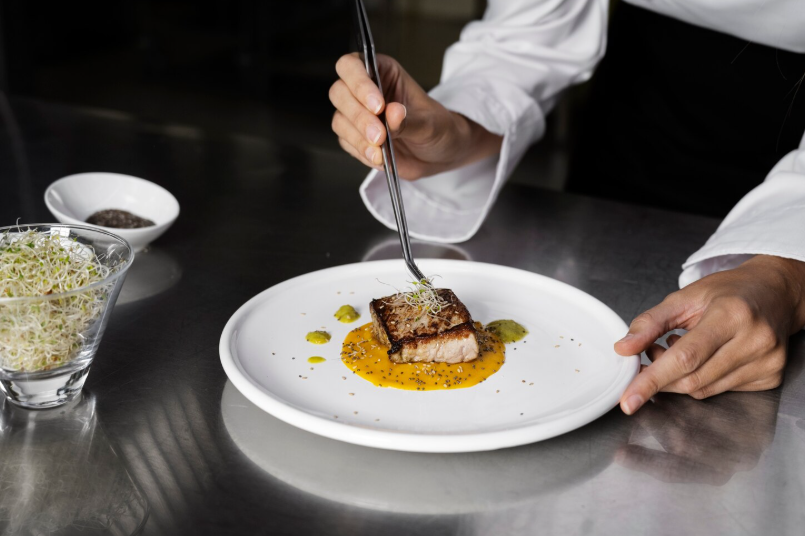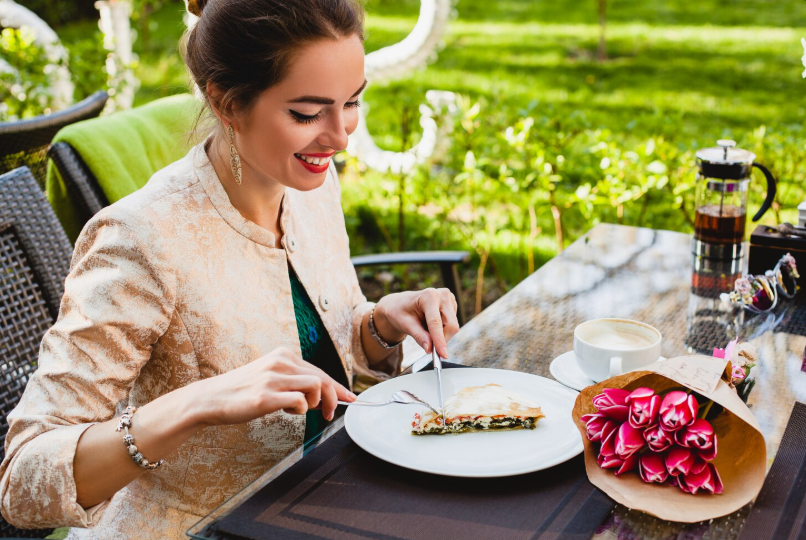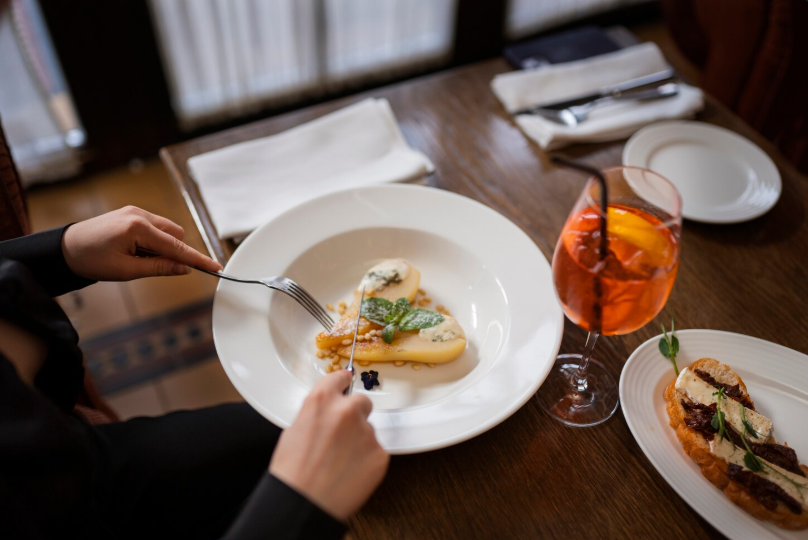
by Dulce Navarro | Sep 29, 2025 | Europe, Food, Lifestyle, Luxury, Restaurant, Travel
Europe’s Best Michelin-Star Hotel Restaurants
For travelers seeking the pinnacle of culinary excellence, Europe offers an unparalleled selection of Michelin-starred hotel restaurants. These establishments not only provide exquisite dining experiences but also immerse guests in a luxurious ambiance, reflecting the rich cultural and gastronomic heritage of their respective regions. From historic city landmarks to secluded countryside retreats, Michelin-star hotel restaurants in Europe redefine the art of fine dining.
Paris: Epicurean Excellence in the City of Light
Paris, synonymous with haute cuisine, boasts several Michelin-starred hotel restaurants that deliver both exceptional food and unforgettable atmospheres. Renowned establishments within historic hotels such as Le Meurice, Hôtel Plaza Athénée, and the Ritz Paris offer chefs’ innovative creations that highlight French culinary artistry. Guests can expect a combination of classic French techniques with modern gastronomy trends, all within opulent surroundings that enhance the dining experience.
London: Luxury and Innovation Across the Thames
London’s Michelin-star hotel restaurants provide a perfect blend of tradition and innovation. Hotels like The Savoy, Claridge’s, and The Ritz host acclaimed restaurants that emphasize seasonal ingredients, sustainable practices, and creative menus. Diners can indulge in modern interpretations of classic British cuisine while enjoying the historic elegance of the city’s most prestigious hotels.
Rome and Florence: Italian Culinary Heritage in Luxury Settings
Italy offers a unique combination of rich culinary traditions and luxurious accommodations. In Rome, iconic hotels such as the Hassler Roma feature Michelin-starred restaurants that serve authentic Italian flavors with a contemporary twist. Florence’s luxury hotels similarly offer fine dining experiences where fresh, local ingredients meet masterful culinary techniques, making these cities essential destinations for gastronomy enthusiasts.
Swiss Alps: Alpine Elegance and Gourmet Excellence
For travelers seeking a mountain retreat, the Swiss Alps provide Michelin-starred hotel restaurants that combine stunning natural vistas with world-class dining. Resorts such as The Chedi Andermatt and Badrutt’s Palace in St. Moritz host chefs renowned for their precision and creativity. Guests can savor seasonal European cuisine while enjoying panoramic views of snow-capped peaks, creating an unforgettable alpine dining experience.
Barcelona and Madrid: Spanish Flair in Michelin-Star Hotels
Spain’s luxury hotels in Barcelona and Madrid host Michelin-starred restaurants that celebrate Mediterranean flavors and Spanish culinary heritage. Hotels like the Hotel Arts Barcelona and the Hotel Ritz Madrid offer gastronomic experiences that pair innovative dishes with sophisticated wine selections. Guests enjoy a harmonious blend of traditional Spanish ingredients and contemporary culinary techniques, all within lavish hotel settings.
Tips for Choosing the Perfect Michelin-Star Hotel Restaurant
When selecting a Michelin-star hotel restaurant, consider the following factors: the chef’s reputation and style, seasonal menus, ambiance, and any exclusive experiences offered by the hotel. Reservations are often essential, as these elite dining venues tend to book quickly. For travelers looking to combine luxury accommodation with exceptional cuisine, selecting a hotel restaurant with Michelin recognition ensures a memorable and refined experience.
Conclusion
Beyond luxury dining and travel, immersing oneself in local culture often requires learning a new language. As an expat, strategies for quick success include consistent daily practice, engaging with native speakers, and leveraging digital language-learning tools. Understanding the local language not only enhances day-to-day experiences but also allows deeper connections with local communities, enriching every journey abroad.
Stay Connected for More Travel and Lifestyle Inspiration. For more insights into travel, culture, and lifestyle tips, follow me on Instagram @salvadorordorica. If you’re seeking professional translation and localization services to enhance your global ventures, visit The Spanish Group — your trusted partner in bridging cultures worldwide.

by Dulce Navarro | Sep 24, 2025 | Food, Lifestyle, Luxury, Restaurant, Travel
Luxury Culinary Retreats in Europe for Food Enthusiasts
A concise, executive guide to immersive gastronomic retreats that blend Michelin-level dining, hands-on learning, and authentic regional experiences.
Introduction
For executives and discerning travelers, a culinary retreat is more than a vacation—it’s a strategic reset. Europe’s most refined food retreats combine world-class chefs, private tastings, and intimate cooking sessions with local producers. These experiences deliver restorative downtime while sharpening cultural intelligence and palate sophistication—ideal for decision-makers who value depth, discretion, and memorable return on leisure investment.
1. What Defines a Luxury Culinary Retreat?
A luxury culinary retreat harmonizes three core elements: exceptional cuisine, curated learning, and authentic local immersion. Unlike standard cooking classes, these retreats are tailored for guests who expect service excellence and exclusivity. Typical components include:
- Small-group or private workshops led by Michelin-starred or renowned regional chefs.
- Access to exclusive producers—olive oil estates, boutique vineyards, artisanal cheese makers.
- Farm-to-table experiences and bespoke tasting menus prepared in high-end settings.
- Accommodation in historic estates, design-focused boutique hotels, or private villas offering privacy and comfort.
What elevates a retreat from excellent to exceptional is the level of personalization: pre-arrival consultations, dietary profiling, bespoke menus, and concierge-organized side excursions. For a company director, these details ensure time is spent on meaningful experiences rather than logistics.
2. Top Regions and Signature Experiences
Europe offers a tapestry of culinary traditions. Choosing a region depends on the flavor profile you’re seeking and the type of learning you prefer. Below are reliable destinations and the signature experiences they typically offer.
Tuscany, Italy — Renaissance of Flavors
Tuscany blends rustic charm with haute cuisine. Expect private truffle hunts, olive oil masterclasses, and intimate dinners in converted farmhouses. Many retreats pair hands-on sessions with visits to boutique wineries for vertical tastings and terroir-led wine education.
Provence & Nice, France — Provençal Elegance
The south of France emphasizes seasonality and finesse. Luxury programs often include market tours with a chef, lessons in classic techniques (sauces, pâtisserie), and alfresco degustations overlooking lavender fields or the Mediterranean.
San Sebastián & Rioja, Spain — Basque Brilliance
Basque Country and La Rioja are pilgrimage sites for food lovers. Michelin-star experiences coexist with pintxo crawls and vineyard immersion. Retreats here focus on flavor layering, small-plate creativity, and deep dives into regional wines.
Alsace & Burgundy, France — Wine and Craft
For guests emphasizing oenology, Burgundy and Alsace offer masterclasses in pairing, private cellar tours, and historical tastings that trace grape lineage and winemaking evolution.
3. What to Expect: Format and Daily Rhythm
Most luxury retreats follow a balanced rhythm that mixes structured learning with unhurried leisure. A typical day may include:
- Morning: Market or estate visit with a chef or sommelier.
- Late morning: Hands-on workshop or demonstration.
- Afternoon: Time for relaxation—spa, walk, or solo exploration.
- Evening: Private tasting menu, paired wines, or chef’s table experience.
For executives, many retreats offer condensed, high-impact schedules—two to three signature sessions rather than all-day classes—so the experience enriches rather than exhausts.
4. How to Select and Book a Retreat
Selection criteria should match goal and available time. Consider the following:
- Program focus: Culinary techniques, wine, foraging, or a mix—choose based on your objectives.
- Instructor caliber: Research the chef’s background, awards, and teaching style.
- Group size: Smaller groups yield more hands-on attention and privacy.
- Accommodations: Opt for properties with private suites and business-friendly amenities when needed.
- Concierge services: Airport transfers, private drivers, and bespoke dining requests simplify the journey.
Engage a trusted travel advisor or your corporate concierge to negotiate add-ons—private winery tours, chef-hosted dinners, or exclusive tastings—so the retreat is tailored to executive expectations.
5. ROI of a Culinary Retreat for Directors
While a culinary retreat is an investment in leisure, it offers tangible returns:
- Creative refresh: New culinary experiences can invigorate creative thinking and problem-solving.
- Networking opportunities: Small, curated groups often include other high-performing professionals.
- Cultural intelligence: Deep regional knowledge enhances global business sensitivity and negotiation finesse.
- Wellness benefits: Mindful dining and restorative environments improve focus upon return.
Seen through the lens of leadership development, these retreats support sustained performance—not just temporary relaxation.
Conclusion
Luxury culinary retreats in Europe offer an elegant fusion of education, indulgence, and cultural immersion. For company directors, these experiences are efficient, restorative, and strategically valuable: they sharpen cultural literacy, stimulate creativity, and provide privacy and service excellence. Thoughtful selection—based on program focus, instructor quality, and concierge options—ensures a memorable and productive escape.
Stay Connected for More Travel and Lifestyle Inspiration. For more insights into travel, culture, and lifestyle tips, follow me on Instagram @salvadorordorica. If you’re seeking professional translation and localization services to enhance your global ventures, visit The Spanish Group — your trusted partner in bridging cultures worldwide.

by Dulce Navarro | Aug 25, 2025 | Europe, Food, Lifestyle, Restaurant, Travel
Michelin-Star Dining Journeys Across Europe
For company directors, a Michelin-star journey across Europe is more than a culinary indulgence—it’s a strategic instrument for deepening client relationships, rewarding top performers, and signaling brand values through impeccable taste and attention to detail. From Parisian temples of haute cuisine to boundary-pushing Nordic kitchens and Mediterranean terroir-driven menus, this guide shows how to curate dining experiences that are both unforgettable and operationally efficient.
Why Michelin Matters for Executive Relationship Building
Michelin stars function as a global quality shorthand that transcends language and industry. Hosting at a starred venue conveys seriousness, discernment, and respect for your guests’ time. Yet the real value is not the prestige alone: it is the orchestration—the way you match cuisine, setting, and service cadence to the business purpose at hand.
Consider the three classic objectives. For new-business courtship, a one-star or two-star dining room with a relaxed pacing can create space for conversation and rapport. For major milestones—a signed deal, a merger announcement—a celebrated three-star with a choreographed tasting menu can frame the occasion with ceremony. For team alignment, a chef’s counter or private kitchen table enables interactive storytelling that bonds participants around craft and curiosity.
Michelin’s evaluation pillars—product quality, technique, personality of the chef, value for money, and consistency—parallel what clients expect from a high-performing partner. When you expose stakeholders to a dining room where these elements are executed flawlessly, you subtly reinforce your own brand narrative: excellence, rigor, and a human touch. The key is intentionality. Choose restaurants for a reason—culinary identity aligned with your message, acoustics conducive to discussion, and service choreography that anticipates needs without intruding on flow.
Finally, remember inclusivity. The European Michelin ecosystem now spans bistros, contemporary kitchens with plant-forward tasting menus, and Bib Gourmand venues that deliver exceptional value without formality. Thoughtful accommodation of dietary preferences and cultural norms—e.g., halal, kosher-friendly options, or alcohol-free pairings—signals respect and expands the circle of participation.
Itinerary Design: From Culinary Capitals to Coastal Icons
A productive itinerary balances headline destinations with logistical sanity and narrative arc. The following regional circuit is designed for a five-to-seven-day leadership program or a set of client engagements spaced across a quarter.
- Paris & Île-de-France: Anchor the journey with modern French cuisine that foregrounds product and precision. Choose a two-star lunch for clearer calendars and lighter pricing, then a one-star bistro for dinner to encourage conversation.
- Basque Country (San Sebastián / Biarritz): Alternate between a three-star destination menu and pintxos crawls led by a local insider. This pairing keeps energy high while showcasing regional terroir from land and sea.
- Northern Italy (Milan or Lake District): Opt for Lombard kitchens with impeccable risotti, contemporary vegetable courses, and benchmark wine service. Schedule an afternoon private visit with a sommelier to refresh palates and deepen knowledge.
- Copenhagen: End with New Nordic inventiveness—fermentation, foraging, and clean design. Choose a venue where the chef’s narrative can be shared tableside to spark creative discussions about sustainability and craft.
Keep transfers under two hours whenever possible and use midday rail segments to preserve morning work blocks and evening dining. A clear through-line—craftsmanship, sustainability, or heritage—will make the journey feel curated rather than opportunistic.
Reservation Tactics, Budgets, and Private Rooms
Availability fluctuates, but directors can de-risk access with disciplined planning and flexible formats:
- Book early and stage holds: Place parallel holds three to four weeks out for different party sizes; confirm 7–10 days prior.
- Leverage lunches: Midday services are easier to secure, quieter, and often priced more attractively for multi-course menus.
- Favor private rooms for outcomes: For sensitive negotiations or product previews, reserve salons that control sound and sight lines.
- Design pairing choices: Offer wine, low-ABV, and alcohol-free pairings to align with wellness and inclusivity goals.
- Budget transparently: For Europe’s top rooms, plan €180–€420 per person for tasting menus, exclusive of pairings and room fees. Communicate caps and approvals in advance.
- Mind the cadence: Aim for 2.5–3 hours max; coordinate with the maître d’ if speeches or product demos are planned.
Tip: share guest preferences (allergies, seating, handshake/no-contact norms) 48 hours before service; it enables gracious, invisible accommodation.
Wine Programs, Etiquette Signals, and Sustainability
Europe’s best dining rooms treat wine as an educational journey. Brief your head of delegation to request a concise pairing narrative—two minutes per flight—to keep focus on conversation. If your guests span experience levels, ask the sommelier for a “split track”: benchmark classics for some, exploratory bottles for others, all within the same price frame. This respects individual curiosity without fragmenting the table.
Etiquette is strategy in disguise. Arrive five minutes early to greet guests at the door and relieve the staff from announcing names. Keep phones off the linen; if photos are welcome, designate one attendee to capture a handful of moments post-dessert. When offering a toast, thank the team—kitchen and front of house—by name if possible. These gestures build goodwill and can be the difference between a good service and a transcendent one.
Sustainability is no longer optional. Many European kitchens privilege local fisheries, regenerative farms, and reduced-waste practices. If ESG is part of your corporate narrative, ask in advance about the restaurant’s sourcing and carbon approach, and weave that into your dinner remarks. Guests appreciate knowing that luxury and stewardship can coexist—and that your company invests in both.
Turning Dining Moments into Business Momentum
Even the finest dinner is only as impactful as the follow-through. Before the meal, clarify a simple objective—relationship, insight, or decision—and tailor seating accordingly. Mix seats halfway through a longer tasting menu to create new conversational pairings without disrupting service. Provide the maître d’ with a subtle table map and timing notes so courses land smoothly around your agenda.
Afterward, send a same-day note to guests with a sincere highlight (“the langoustine course and your point on market entry stuck with me”) and a concrete next step. Within 72 hours, share a short summary and, if appropriate, a photo of the team with the chef—with permission. Archive key details (preferences, birthdays, dietary notes) in your CRM to guide future invites. In this way, a Michelin-star evening becomes a chapter in an ongoing narrative of thoughtful leadership.
Learning New Languages as an Expat: Strategies for Quick Success
If your role places you in Europe for extended periods, rapid language gains deliver outsized returns: smoother meetings, warmer hospitality, and cultural fluency at the table. Start with the high-frequency core—industry verbs, numbers, time, and polite structures—and drill them with spaced-repetition flashcards. Layer micro-immersion: switch your phone and calendar to the local language, follow local news briefs, and run daily five-minute “stand-ups” with a tutor. Build a meeting script bank for greetings, small talk, and agenda transitions; mastery of these bridges 80% of social moments. Finally, embrace polite imperfection. Use the language early, ask for corrections, and celebrate small wins. Fluency is a compounding asset—especially when shared over a remarkable meal.
Stay Connected for More Travel and Lifestyle Inspiration
For more insights into travel, culture, and lifestyle tips, follow me on Instagram @salvadorordorica. If you’re seeking professional translation and localization services to enhance your global ventures, visit The Spanish Group — your trusted partner in bridging cultures worldwide.



